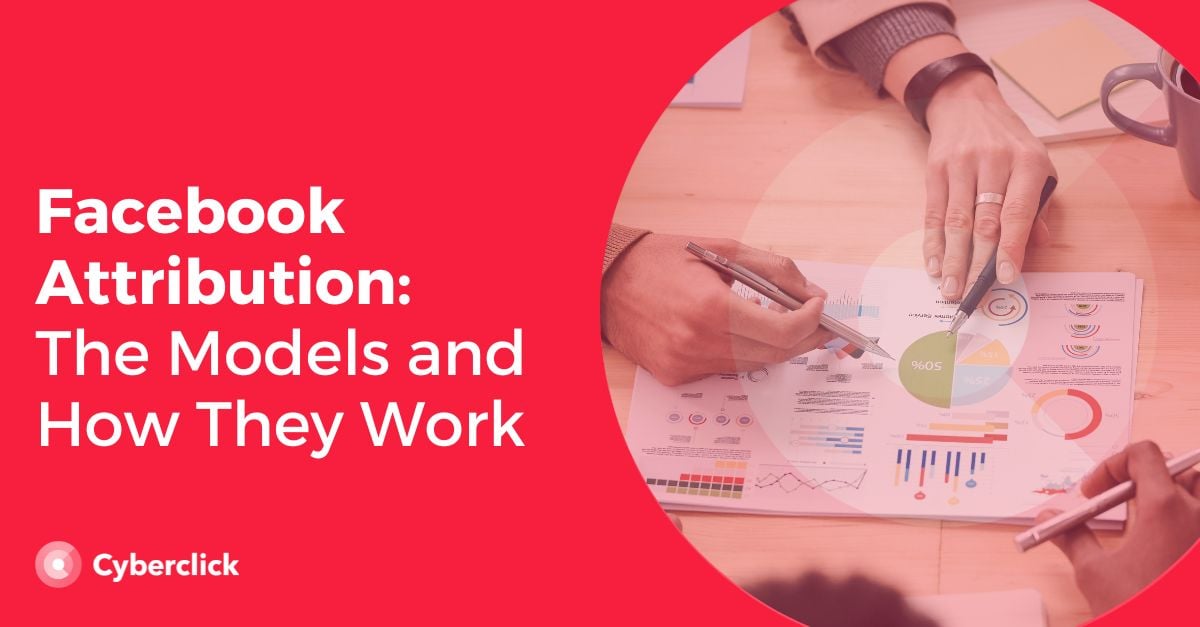Attribution marketing consists of analyzing and determining the channels customers have interacted with that have influenced their purchase decisions. Consumers interact with different online and offline touchpoints before making a purchase. Therefore, knowing which ones are the most successful is fundamental in perfecting your marketing strategy.
In this post, we'll focus specifically on Facebook attribution models for Facebook Ads.
Facebook Ads uses attribution marketing to optimize the ads that companies publish on both the social network and all the channels associated with it, such as Instagram. So, if you are interested in boosting your marketing strategy through this platform we'll tell you everything you need to know i!

The Different Attribution Models on Facebook
The model favored by Facebook is known as the "last click model". This attributes all of the credit to the last channel the user interacted with before converting. It's very interesting for businesses with short sales cycles that last less than a day. However, its downside is that you may lose sight of those consumers who are in the first phase of the sales funnel.
The last-click model is the default for Facebook Ads, but there are many other models available. Thanks to Facebook Attribution, a tool with which you can get more information about your audience and optimize your campaigns, you can access other models as well.
Linear Attribution Model
In this model, there isn't one touchpoint that is given more value than another. All of them start from the same value and are taken into account equally. This model gives you an overview of the main touchpoints that work well for your business. The downside of this model is that it errs on the side of attributing too much value to the middle and too little value to the channels at the beginning and end of the customer journey. So, if you are running a pay-per-click campaign, this model may not be the most interesting for you.
Last Contact Model
This is somewhat similar to the last-click model as it attributes the whole conversion to the last channel the customer visited prior to converting. However, unlike the last-click model, if there wasn't any interaction, it will give all the credit to the last impression.
Positional Model
Like the linear attribution model, the positional model also values all channels, but in this case, it does not give them the same importance. The first and last clicks are given a value of 40%, and the remaining 20% is divided between the touch points in the middle. This model may undervalue touchpoints in the middle of the customer journey, but it is the model that provides the most complete information.
Time-Based Model
This model gives more importance to touchpoints that are closer to the moment of conversion. The channels that are further away from the conversion are the ones that have less and less value. This model usually yields good results when combined with other Facebook attribution models.
Data-Driven Attribution Model
This is the most objective model, as it assigns the correct value to each touchpoint based on the actual data it receives from customer conversions. Although it is probably one of the best models, its disadvantage is that it requires a large amount of data to obtain reliable results. Also, keep in mind that Facebook Ads only uses its own data and not data from other platforms like Google, so this model is limited in this regard.
To assign value to the touchpoints from the attribution models, Facebook Ads are based on both views and the clicks on the ad. What does this mean? It not only takes into account the channels the user clicks on but also those that the user viewed before converting. However, clicking takes precedence over viewing. If a user views the ad and subsequently clicks on it, the conversion will be awarded to the click.
How Facebook Assigns Conversions
Attribution models are not the only technique used by Facebook Ads to assign the value of conversions. Attribution windows also play a key part.
This is the number of days that pass from the time a user sees an ad or clicks on it until he or she finally performs the desired action.
How Attribution Intervals Work
By default, Facebook Ads sets the following attribution interval:
- Up to one day after display.
- Up to 28 days after a click.
This means that if you don't set your preferences, Facebook Ads will let you see what the user has done one day later if they have only viewed the ad and not clicked, and 28 days later if they have clicked on the ad.
However, you can easily change the days for this attribution window and even indicate that both views and clicks have the same attribution interval. You can modify this so that it does not only cover one day or 28 days – you also have an option to set it to 7 days.
Social Account Manager at Cyberclick. Le apasiona el marketing, las redes sociales, leer y escribir.
Social Account Manager at Cyberclick. Passionate about marketing, social media, reading and writing.





.jpg)
Leave your comment and join the conversation